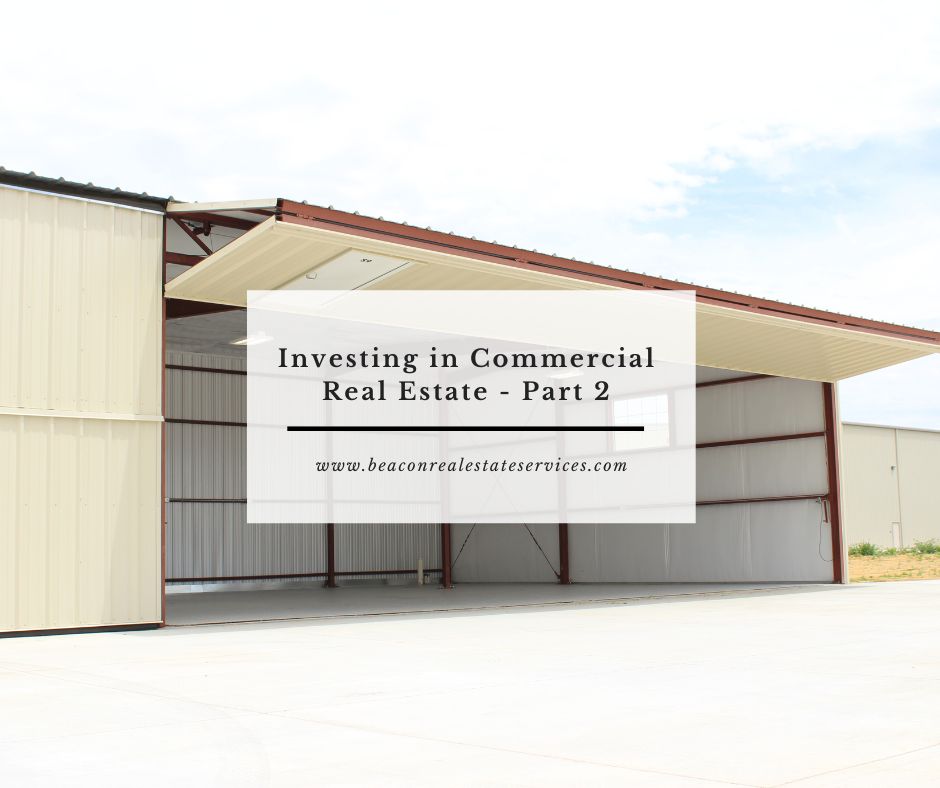
In last months newsletter we explained that investing in commercial real estate and thus enjoying the steady returns and tax shelters, can be done by anyone even with only a modest investment. We ended last months article (which can be found by clicking here) with several questions about investing in commercial real estate, some of which we will answer now in this months segment to this series.
- What are the returns that can be expected from a one million dollar commercial property when purchased by a group of people pooling roughly $250,000?
In today’s Front Range/Denver metro area market, returns range from 5% to as high as 20% depending on the property type, tenant, location, and length of lease. For instance, a low but very solid and low risk investment would be a free standing building leased to Walgreens on a 20 year lease. This is an extremely low risk type of investment with nothing for the investors to do but collect their return on investment (ROI) monthly or quarterly, because Walgreens will manage the building themselves, pay the property taxes, insurance, and all maintenance for the entire 20 years. This is called a triple net (NNN) lease and requires no property management and therefore due to that and how low risk and easy this type of investment is, the ROI will be on the lower end of the range, probably close to 5%. This may not seem like much but not only does the investment group get the 5% return, they also enjoy the tax shelters mentioned earlier (which will be explained in greater detail in future newsletters). On top of that, the building, and the land under it, generally increases in value no less than the annual consumer price index for that particular market and the loan is being paid down over time.
At the other end of the investment spectrum would be a property that could potentially return 20% annually or even more but requires a higher risk tolerance and some more effort. This might be for instance a repurposed building investment, such as a former small retail strip center that is remodeled into a flex space/man cave type of project, or maybe an older office building that is repurposed into residential condos, or an old office building that is transitioned into self-storage. These types of projects are a bit more complex and take more time to produce the ROI. This type of investment requires a top notch professional real estate team to execute the strategy, but the ROI can be very strong. Nevertheless as with any high return investment, there is more risk than investments like the Walgreens investment mentioned earlier.
Then there is everything in between the 5% ROI and the 20% ROI, which is a broad range of property types. Right now for instance a new class A office building or retail center will typically provide a six to ten percent ROI, and a newer warehouse/manufacturing property will return roughly the same. Older buildings in those categories can have somewhat higher returns but with more on-going maintenance required and a somewhat higher level of risk.
As you are aware, the greater the potential risk, the greater the potential return. Conversely, the lower risk the investment, the lower to ROI.
In the next installment of this series on investing in commercial real estate for our newsletter, we will go into greater detail about the financial workings of a one million dollar proposed investment for an LLC formed by Beacon Real Estate for both a newer low risk fully occupied retail strip center, and also alternatively a one million dollar repurposing of an older building into a flex space/man cave project. We’ll walk you through both investment scenarios and discuss tax shelters, selling the property ten years down the road to realize maximum profit, cash on cash annual return prior to the sale, and tax consequences upon sale of the property. We’ll also cover the wonderful IRS gift to real estate investors known as the 1031 Tax Deferred Exchange.
If in the meantime until the next installment of this series on commercial real estate investing, you have any questions at all pertaining to investing or have a specific project you would be interested in investing in, please contact Justin or Stephanie at your convenience.
Prices for most commercial real estate will come down somewhat over the next six to nine months before leveling out and then beginning the appreciation stage once again. Now is the time when savvy investors step up and seize properties at discounted prices compared to the intrinsic value. Beacon is perfectly positioned to help its clients do just that!
Author:
Craig Rathbun
Senior Advisor at Beacon